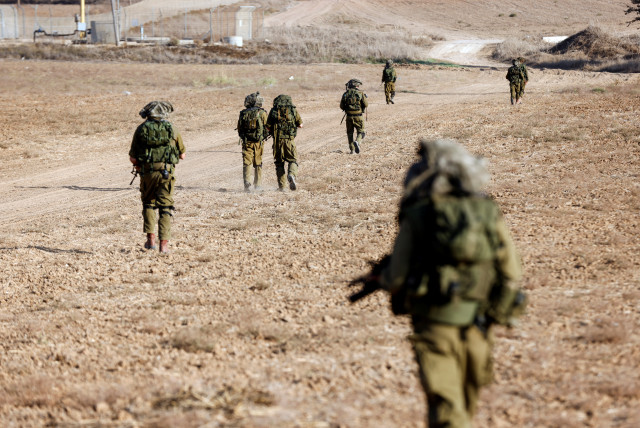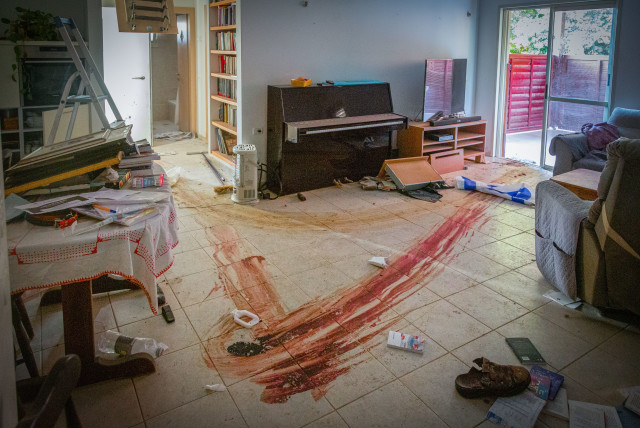The IDF Oct 7. probes are coming out, but when will PM be probed? - analysis

While the IDF probes are a significant start in helping the nation move beyond October 7, until there is a state inquiry, it is unlikely that the nation will be able to fully turn the page.
At least three major strategic and tactical failures allowed Hamas to invade southern Israel at over 60 locations and in 22 villages on October 7, with Kibbutz Be’eri being one of the most severe victims.
And it is important to enumerate all of these failures so as not to lose the big picture in the volumes of facts and time frames which the IDF shared on Thursday.
But it is also important to state what did not come out on Thursday: the majority of the IDF’s remaining probes which will be publicized on a rolling basis over the next seven weeks, and just as crucially, the results of a state inquiry of Prime Minister Benjamin Netanyahu, his government, and former governments who shared the failed “conceptzia”/conceptual security framework that allowed October 7 to happen.
The key takeaways from the first probe
However, first back to what we did learn today.
1) The IDF’s first report on October 7/Be’eri confirms that the military’s border defense was vastly undermanned, betting too much on technology and sensors to provide advanced warnings. When Hamas used retro tactics to destroy these sensors and to invade, the IDF had no answer. This was about the hubris of the IDF, the Shin Bet (Israel Security Agency), and the government. They all wrongly believed that Hamas was deterred and that it was too incompetent to present an invasion threat.
2) The report confirms the broader failure of not having a serious second line of defense. No matter how many troops and sensors one puts on a broader, a skilled and patient enemy can always find at least one weak link.Based on this fear the IDF has worked for around a decade on how to handle a successful Hezbollah invasion of a few northern border villages (a few, not 22 as Hamas did.)
It is exactly because no border is impenetrable, that a serious second line of defense must be ready at all times to prevent successful invaders from getting well past the border. With no real second line, once Hamas broke through the border, some of its fighters got as far as Ofakim no closer than Ashkelon.
According to the Be’eri report, the IDF did not gain a numerical advantage over Hamas until 2:30 p.m. on October 7, more than 7.5 hours after the invasion began at 6.55 a.m. This stunning failure exponentially compounded the earlier one.
3) Intelligence and operations warnings failures – IDF intelligence officer “V” warned her supervisor Lt. Col. “A” of Hamas’s invasion plans, but was told she was entertaining a “fantasy” and wasting everyone’s time.
Other senior IDF operations officers ignored warnings from junior female lookouts. IDF intelligence even ignored hundreds of Israel SIM cards lighting up in Gaza on the eve of the invasion, dismissing it as a drill. The fact that so many Hamas members were suddenly switching to Israeli SIM cards might have been considered evidence of a planned invasion of Israel.
Finally, IDF intelligence and operations were so distracted by Hamas’s 3,000 rockets in four hours, that they did not devote enough attention to Hamas’s simultaneous ground invasion. According to the Be’eri report, no brigadier-general division level commander was put in charge of the Be’eri area until 1:00 p.m.
It is no wonder that few reinforcements arrived if there was no one to run the show. It took so long because IDF intelligence and the high command were totally blindsided and then in a state of shock.
The next probes will reveal further details of what went wrong
We will need to wait for the full details about some of the above issues, such as exactly what went on behind the scenes within IDF intelligence, operations, and the high command, leading up to the war and on October 7, in the following probes which are due out over the next seven weeks.
And all of this is happening far too late.
The most intense parts of the Gaza war were over by early January.
While there was heavy fighting in Khan Yunis briefly in early February and in Rafah briefly in early May, most of the time since early January, the fighting has been low key.
These probes could have been publicized in March-April if they had been started in January.
Yet, the public will now hopefully receive a full accounting on all of these issues.
In contrast, Netanyahu has blocked even discussion of a state inquiry to examine his decisions and the decisions of prior governments which led to October 7.
On that topic, there is little debate that Netanyahu is one of a group of authors of the security concept that Hamas could be deterred and contained in Gaza, and that it was acceptable to leave them in power.
Along those lines, Netanyahu was one of the key authors of the plan to have Qatar pay Hamas to avoid wars.
Further, while views differ on who is at fault for the negative impact the 2023 judicial overhaul debate had on the IDF, at least one view blames Netanyahu for pushing it forward with such speed and tenacity that his own defense minister Yoav Gallant, who supports judicial reform in general, warned that he could destroy IDF operational readiness.
There is no question that Netanyahu is not alone to blame. Benny Gantz, his chief rival for political leadership, was IDF chief of staff from 2011-2015 and was part of the policy of deterrence and containment.
Former prime ministers Naftali Bennett and Yair Lapid (mid 2021-end of 2022) also accepted this security framework.
Some have said that almost the entire current political establishment should be replaced with new blood, from Right to Left.
But one criticism specific to Netanyahu is that instead of pursuing diplomatic options with the Palestinian Authority in the West Bank to isolate Hamas, he instead tried to weaken the PA.
Bennett would likely have supported this policy, but Gantz and Lapid certainly did not.
The missing puzzle pieces
Did this strengthen the threat of Hamas or would any political initiative to weaken Hamas though building up the PA have gone nowhere?
A non-partisan state inquiry could provide a reasoned opinion and voters could render their verdict on the issue.A state inquiry will also be able to judge the IDF and Shin Bet chiefs, who currently have no one above them to second-guess their decisions.
In any event, while the IDF probes are a significant start in helping the nation move beyond October 7, until there is a state inquiry, it is unlikely that the nation will be able to turn the page.
Jerusalem Post Store
`; document.getElementById("linkPremium").innerHTML = cont; var divWithLink = document.getElementById("premium-link"); if (divWithLink !== null && divWithLink !== 'undefined') { divWithLink.style.border = "solid 1px #cb0f3e"; divWithLink.style.textAlign = "center"; divWithLink.style.marginBottom = "15px"; divWithLink.style.marginTop = "15px"; divWithLink.style.width = "100%"; divWithLink.style.backgroundColor = "#122952"; divWithLink.style.color = "#ffffff"; divWithLink.style.lineHeight = "1.5"; } } (function (v, i) { });



